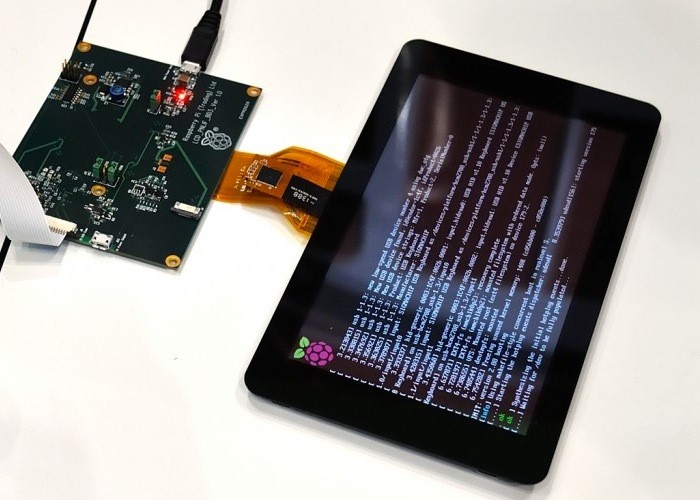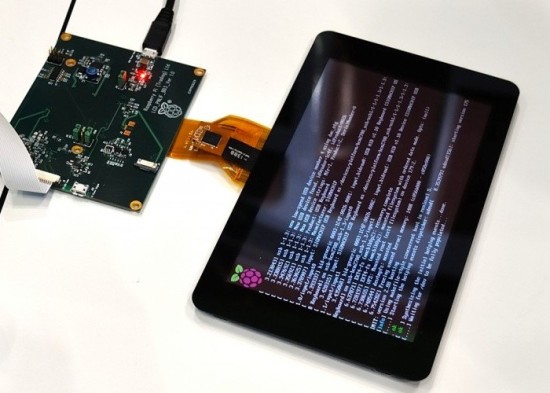The display costs £48, which is more than the Pi itself but this is down to the parts being much more expensive than the Pi’s circuit board.
The screen was made by UK-based Inelco Hunter and uses a display serial interface (DSI) and digital parallel interface (DPI) that requires a driver board to interface with the Pi. The display also requires its own power connection, which can be shared with the Pi over USB.
The connection between the Pi and the driver board relies on the DSI interface leaving the Pi’s HDMI port free to power a second display.
The screen comes with an adaptor board, DSI ribbon cable, screws for mounting the adaptor board and Pi to the rear of the display and jumper wires for powering the screen and Pi. So currently, when you first buy the touchscreen, it will be a bit of a DIY job, as the driver board and a few cables have to be connected to the display first. In future, the Pi Touchscreen will come ready assembled.
Now, you could find cheaper displays but it is doubtful you could find them at this size and quality for less.
The new Raspberry Pi touchscreen is now available from the Foundation’s Swag Store, as well as a limited number of Raspberry Pi suppliers. More retailers will get the touchscreen later this week. The new touchscreen works with the Raspberry Pi 2 Model B, Raspberry Pi B+, and Raspberry Pi model A+. The new screen also requires the latest version of Raspbian to work correctly.

